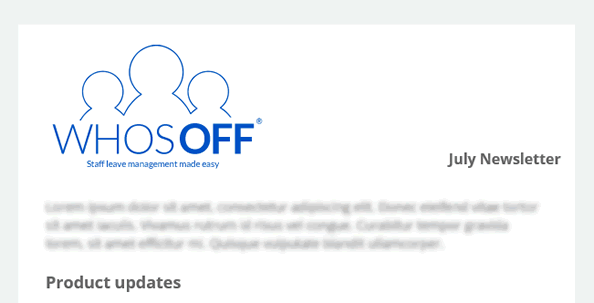We’ve all had days when we don’t feel like going to work, but most of us power through. Yet, for some employees, the temptation to ‘throw a sickie’ is too strong.
As a company leader, you need to trust your team – and most staff only take time off if they really need it. Occasionally, however, someone will take advantage of the system and call in sick when they’re not ill.
The occasional unauthorised day off may not disrupt workflow, but over time, problem staff can start to take liberties. Suspicious absences can also create a bad atmosphere, as loyal team members pick up the slack for less committed colleagues.
When does ‘the odd day off’ become absenteeism?
Sick leave is part and parcel of running a business, and you shouldn’t encourage staff to come to work if they are ill. Presenteeism can be incredibly damaging to people’s health and stress levels. Without time off, a minor ailment can spiral into a significant illness.
For most company leaders, genuine staff sickness won’t be a major issue. The average UK professional takes five days off due to illness each year – which is less than 3% of their total working hours. It might be inconvenient for a day or two, but most staff members are soon back at work.
Employees with chronic physical or mental health conditions may need more time off. However, you can work with them to find a set-up that supports their recovery with minimal disruption to your business.
Read more: how to manage long-term sick leave
Can your company spot suspicious staff absences?
Unless someone admits to pulling a sickie or you’re sent evidence from a colleague, it’s difficult to spot unauthorised absences. But repeat offenders can create tell-tale patterns.
Tracking staff sickness can help you to identify suspicious trends in employee absences. For example, do you have any team members that:
- Take a lot of Mondays and Fridays off?
- Fall ill whenever there’s a major sporting tournament?
- Take sick leave when a big piece of work is due?
- Are absent on a day they’ve been refused annual leave?
- Take their exact number of full-pay sick days each year?
Most companies recognise the benefits of a system for managing staff holidays online. However, you may not be aware that the best HR leave management software on the market can also track other types of absence, including sick days.
At the very least, using digital software to keep an accurate absence record will help you calculate staff sick pay entitlements. And it becomes an even more useful tool if you suspect someone is taking advantage of your sickness policy.
Create your FREE trial today!
Is it ever OK for employees to pull a sickie?
Nobody likes to be taken for a fool, but there could be a reason someone’s frequently phoning in sick to your business. Ongoing health conditions aside, common reasons for repeat absences include:
- Feeling overwhelmed by a work project.
- Problems with office politics.
- Undiagnosed mental health conditions.
- Stress and burnout.
- Problems at home (such as childcare issues, relationship breakdowns or trying to care for a family member).
In many of these scenarios, simply starting a conversation with the employee can help you to get to the root cause and find a workable solution. Reassigning tasks or flexing someone’s working hours could make a massive difference to their reliability. Unauthorised absences don’t always lead to dismissal.
How do you clamp down on staff absences?
Of course, there are occasions when an employee plays the system, and there’s no deeper reason for their absence. Tracking their time off provides vital evidence for terminating their contract.
Showing staff that there are consequences to absenteeism also sends out a strong cultural message. If someone sees a colleague held accountable for their actions, they’ll think twice when they want to pull a sickie!
Tracking staff absences through HR leave management software can also help you to reward good attendance. For example, some companies use Bradford Factor Scores to calculate attendance. Anyone who hasn’t taken sick leave receives extra paid holiday.
Whether you choose the carrot or the stick approach, your company needs to track absence trends. Telling the difference between genuine illness and absenteeism will discourage staff from malingering - and stop absenteeism from affecting company morale.
Track and analyse employee sickness with WhosOff HR leave management software. Start your trial and pay nothing for the rest of this month and all next month.
Photo by Vlada Kapovich of Pexels.com

